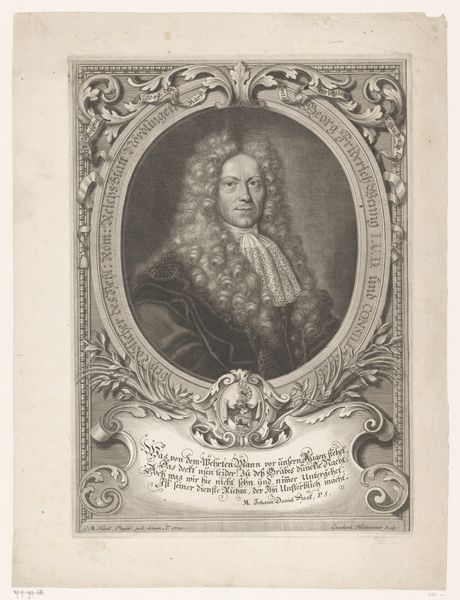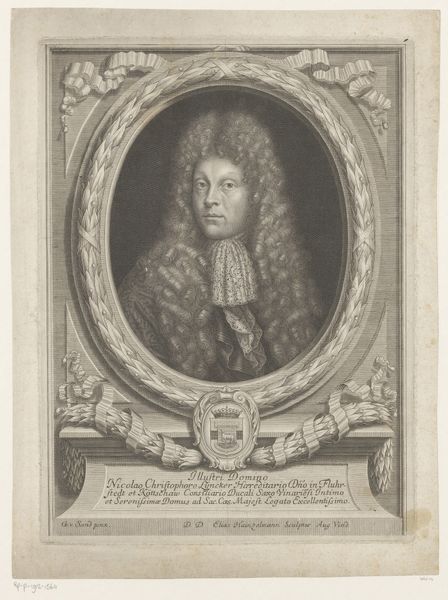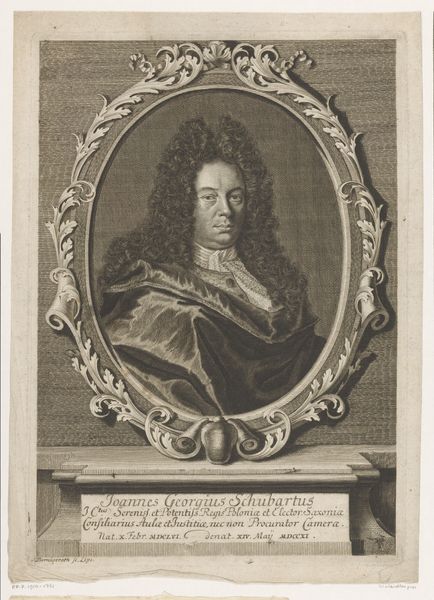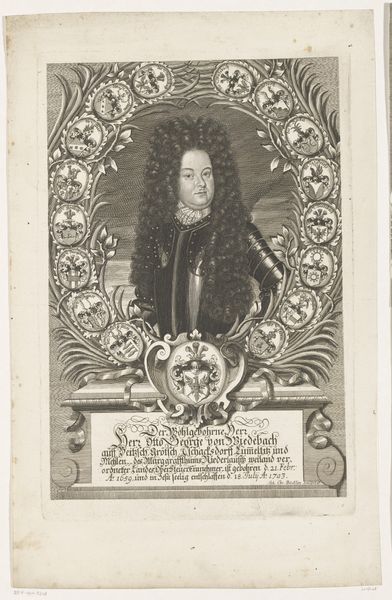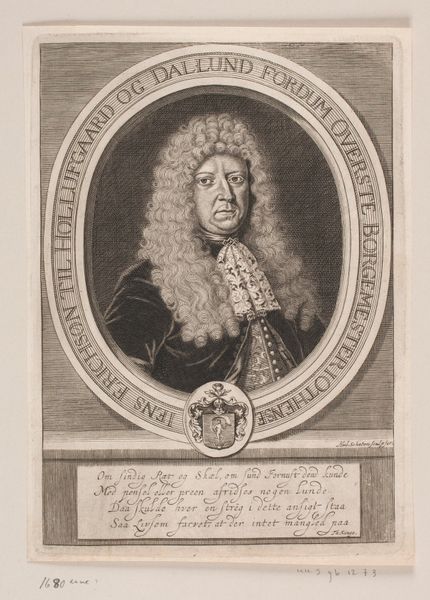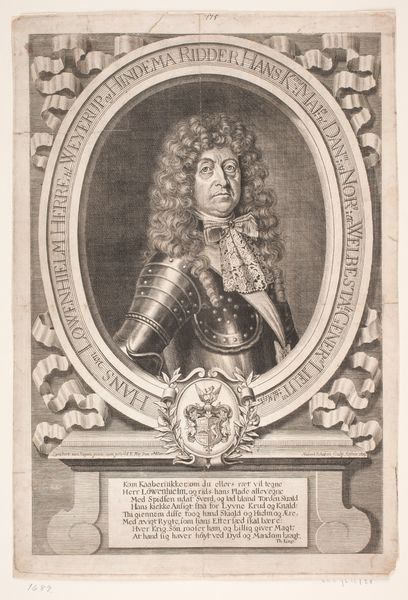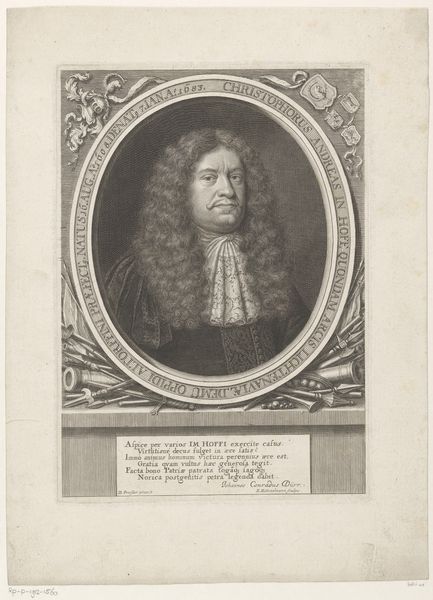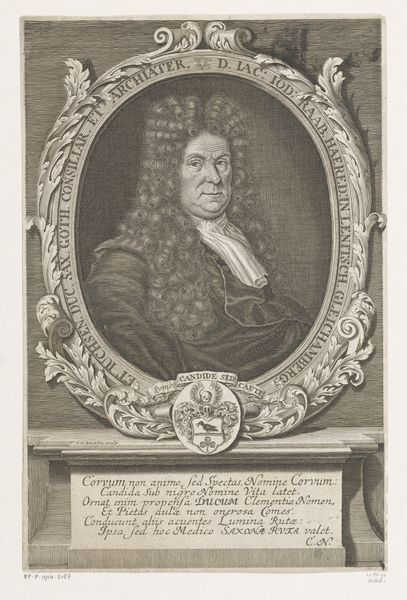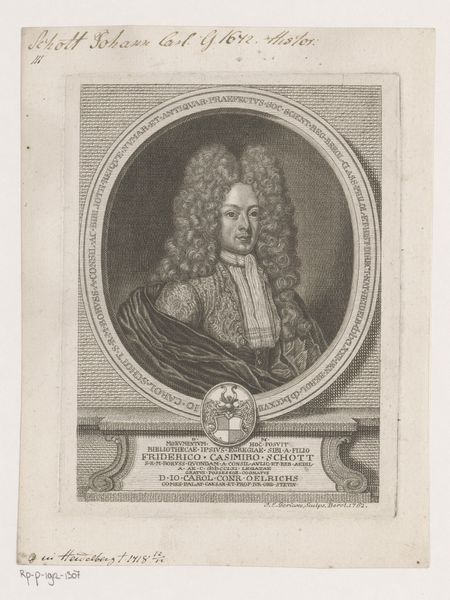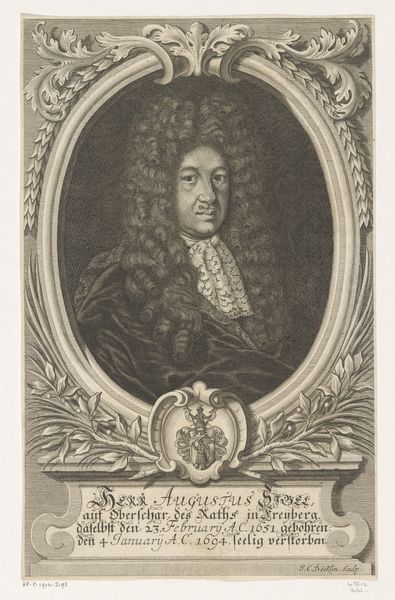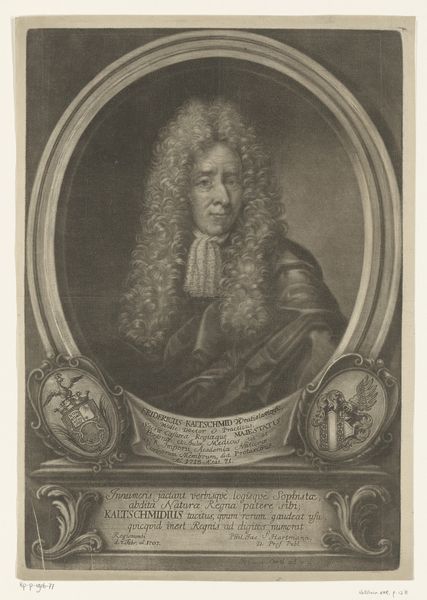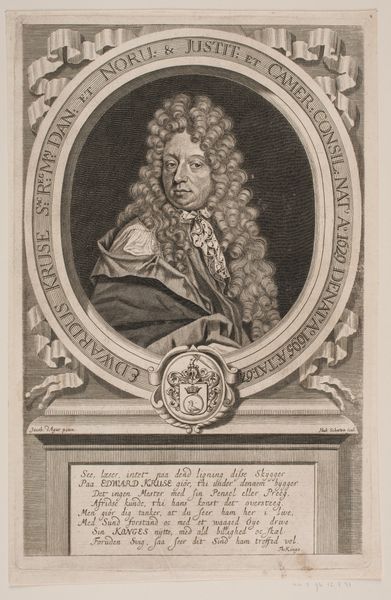
print, engraving
#
portrait
#
baroque
# print
#
history-painting
#
academic-art
#
engraving
Dimensions: height 287 mm, width 209 mm
Copyright: Rijks Museum: Open Domain
This print portrays Christian Friedrich Meurer, and was made by Johann Christoph Boecklin in the late 17th century. It's rendered through engraving, a printmaking technique where lines are incised into a metal plate, which is then inked and pressed onto paper. The precision and detail achieved through engraving are striking; you can see it in the intricate rendering of Meurer's wig, the delicate lace collar, and the heraldic crest below. This wasn't a quick process. Engraving demanded immense skill and time, reflecting the value placed on meticulous craftsmanship. Prints like these played a crucial role in disseminating images and information in an era before photography, but were also a way of demonstrating status. Consider how the material—the metal plate, the ink, the paper—all contribute to the final image, and the labor required for this piece. This challenges us to think about the social context of its creation, and how we understand the relationship between craft, art, and the hierarchies of production.
Comments
No comments
Be the first to comment and join the conversation on the ultimate creative platform.
